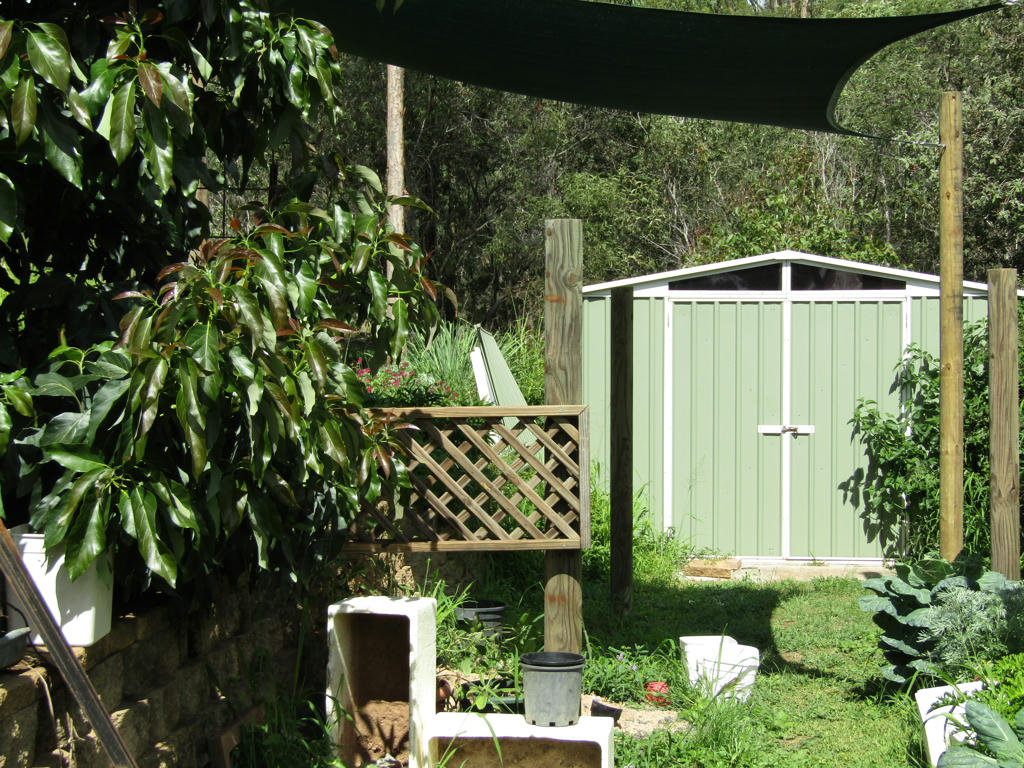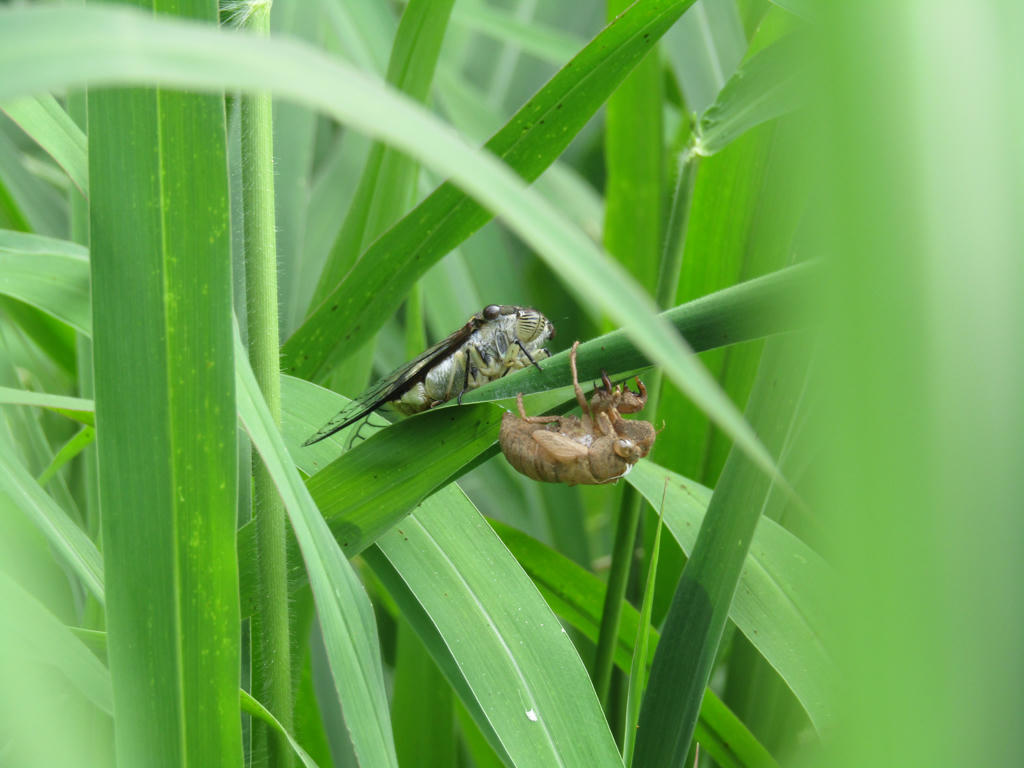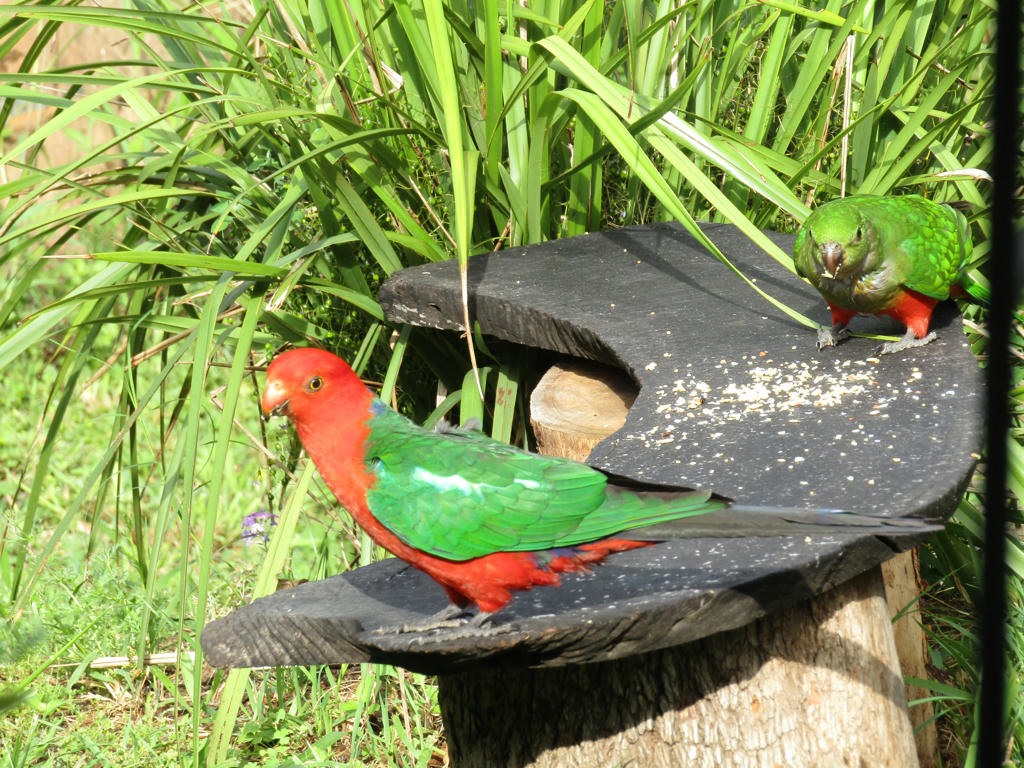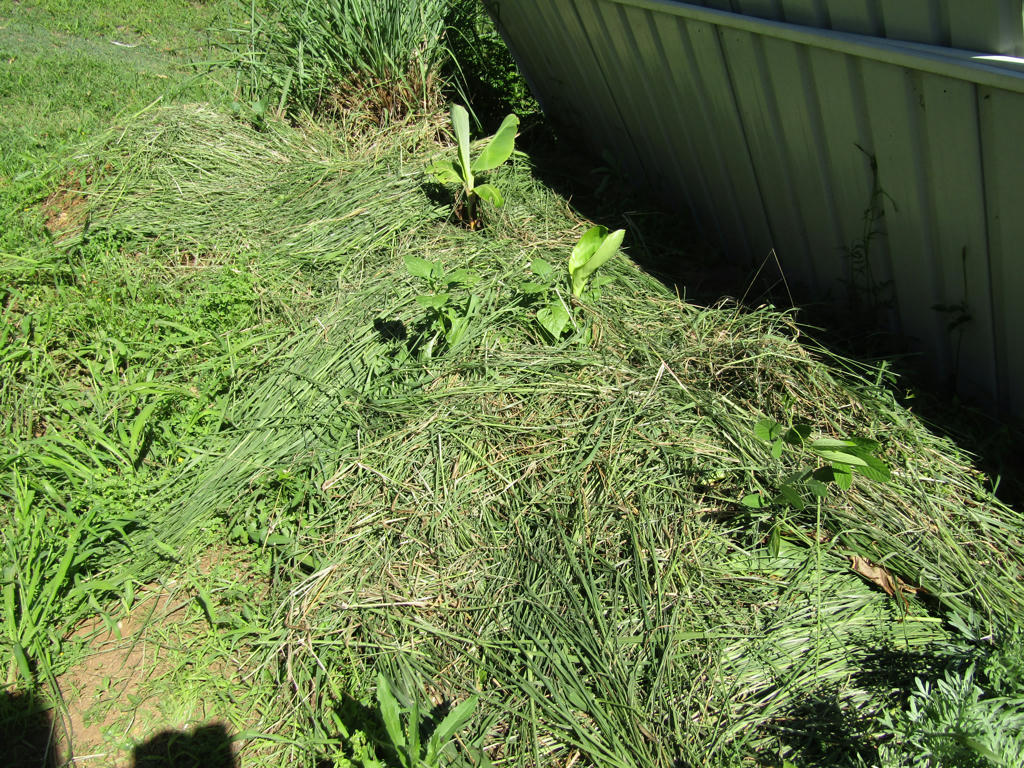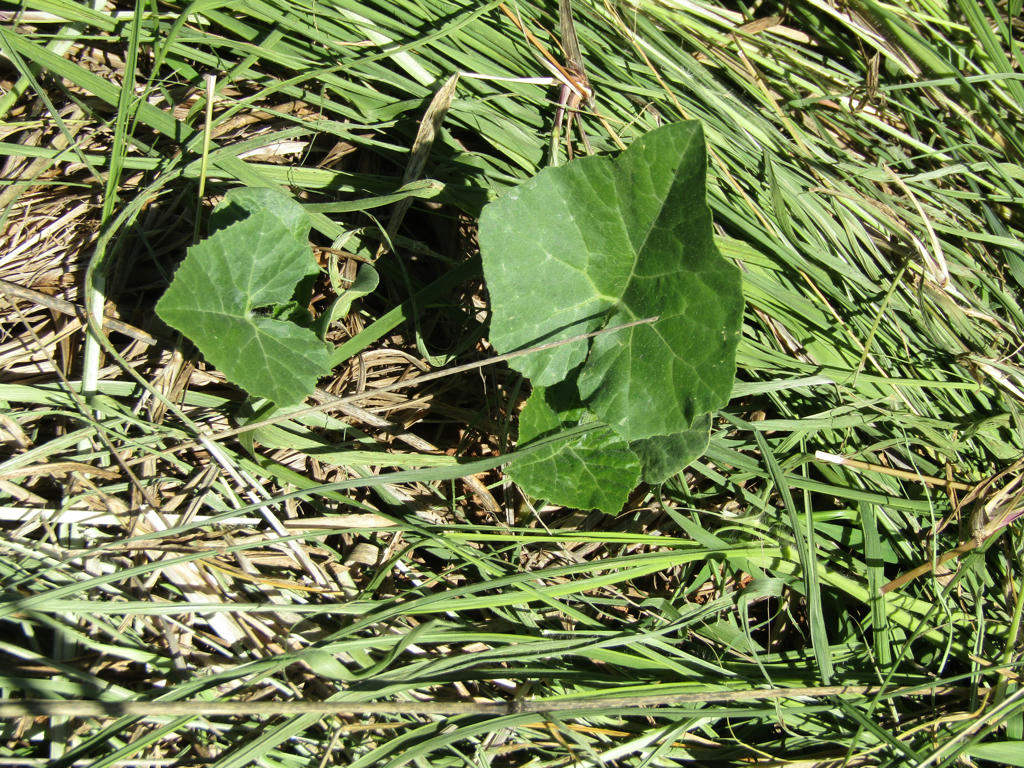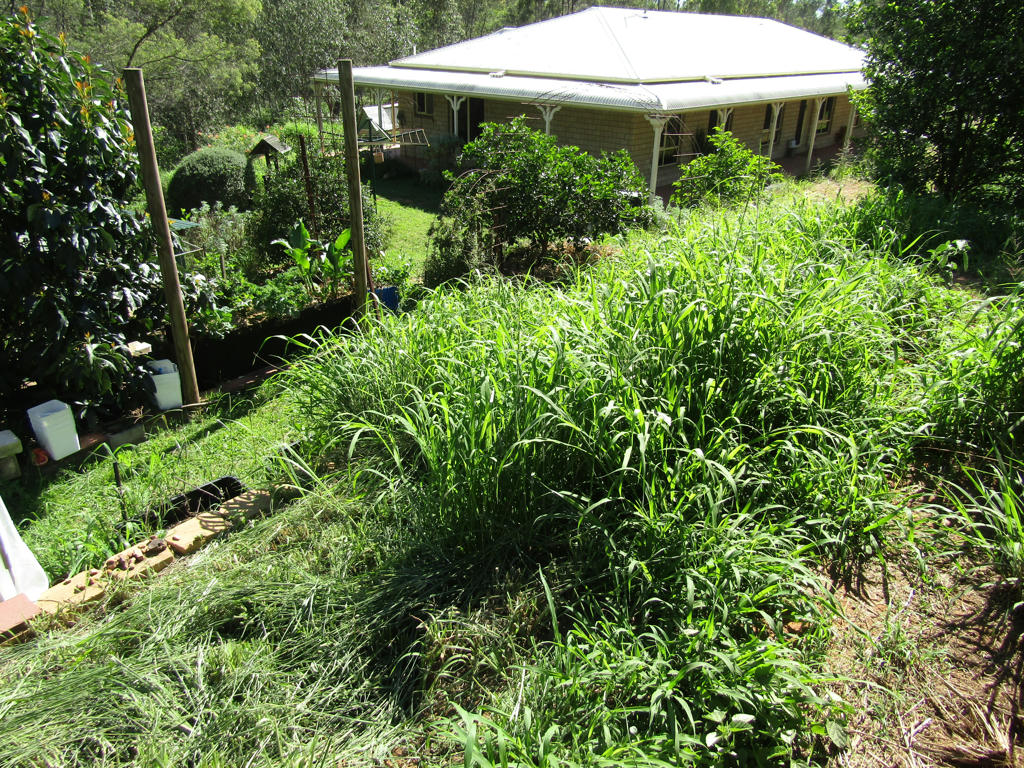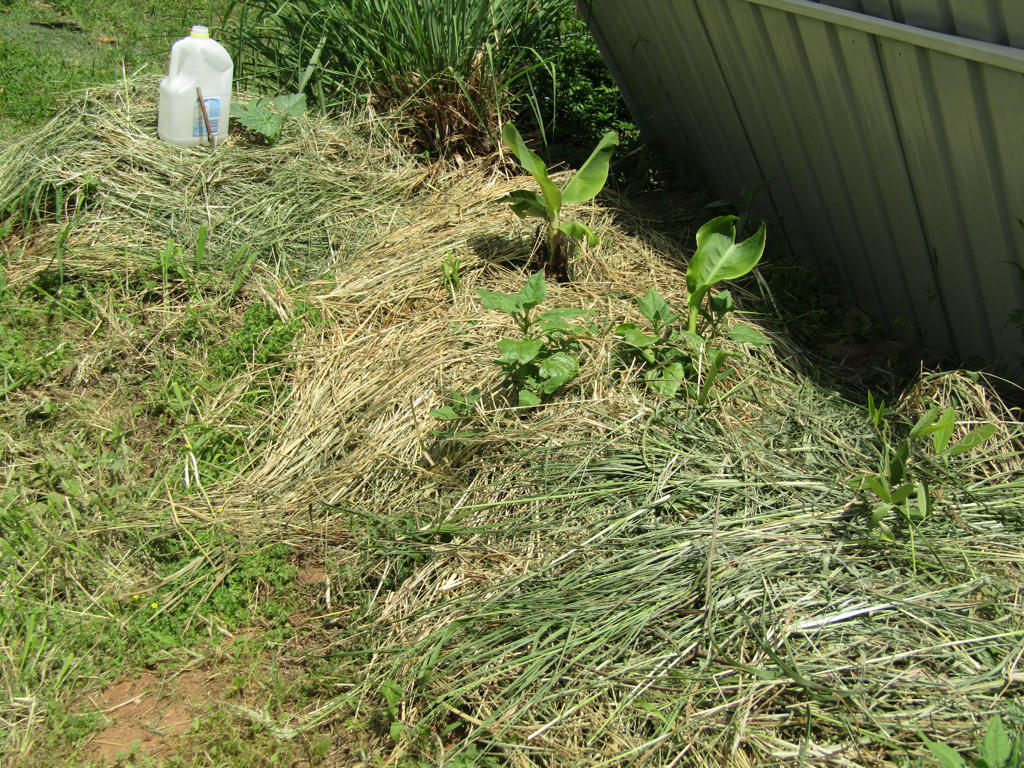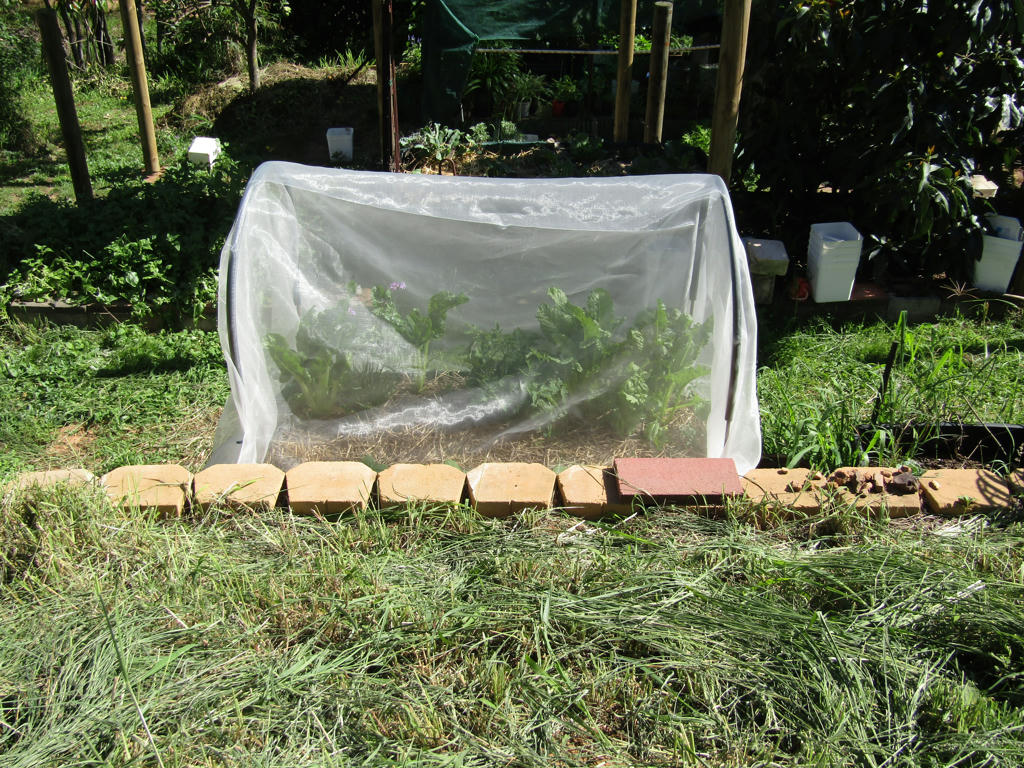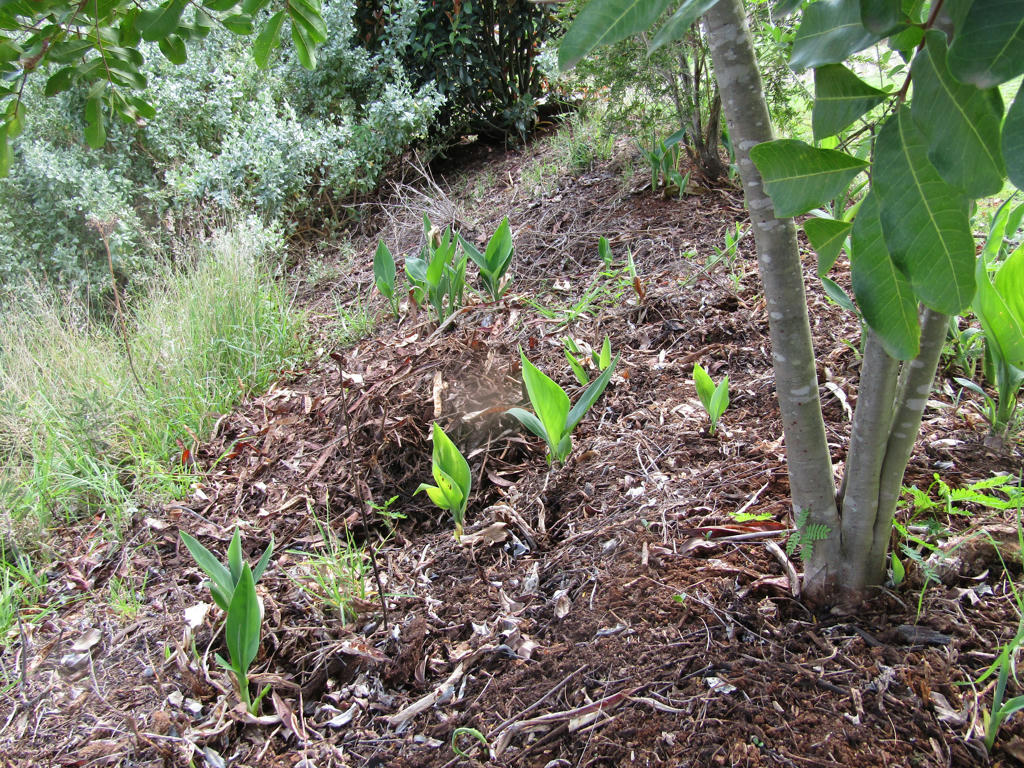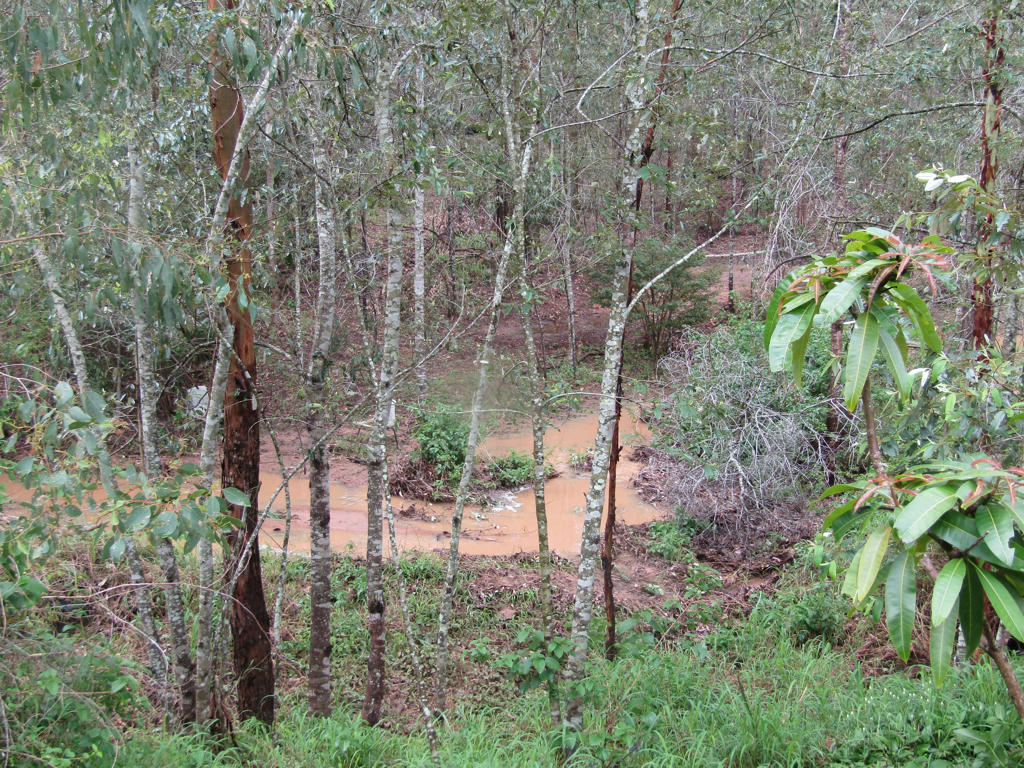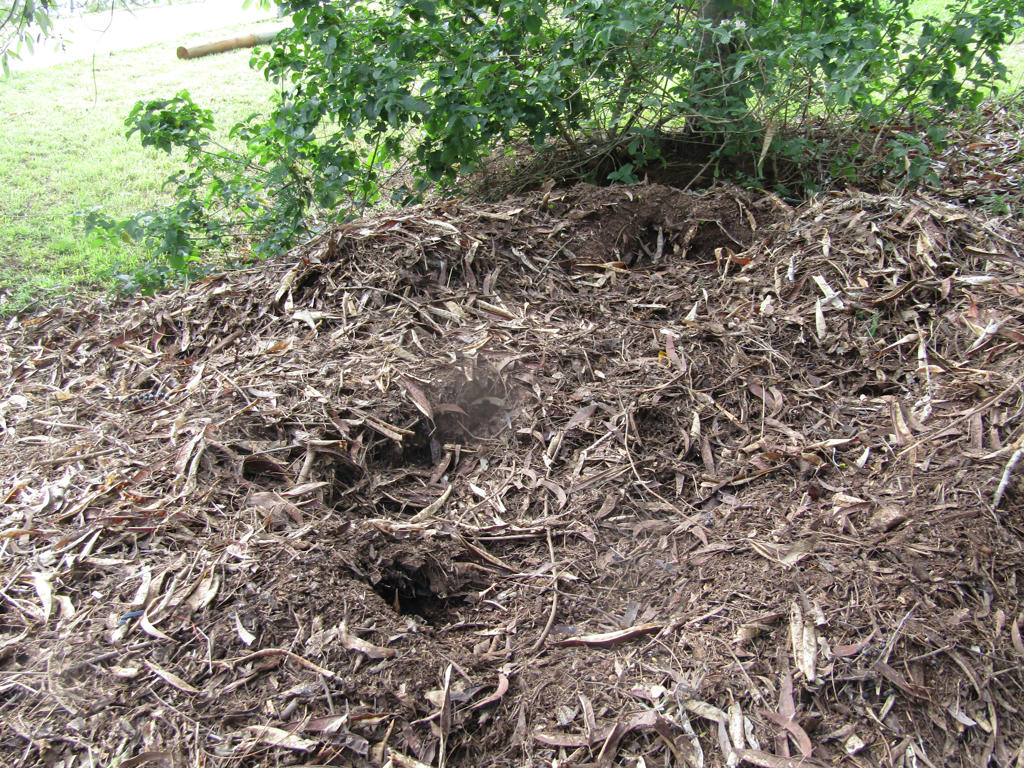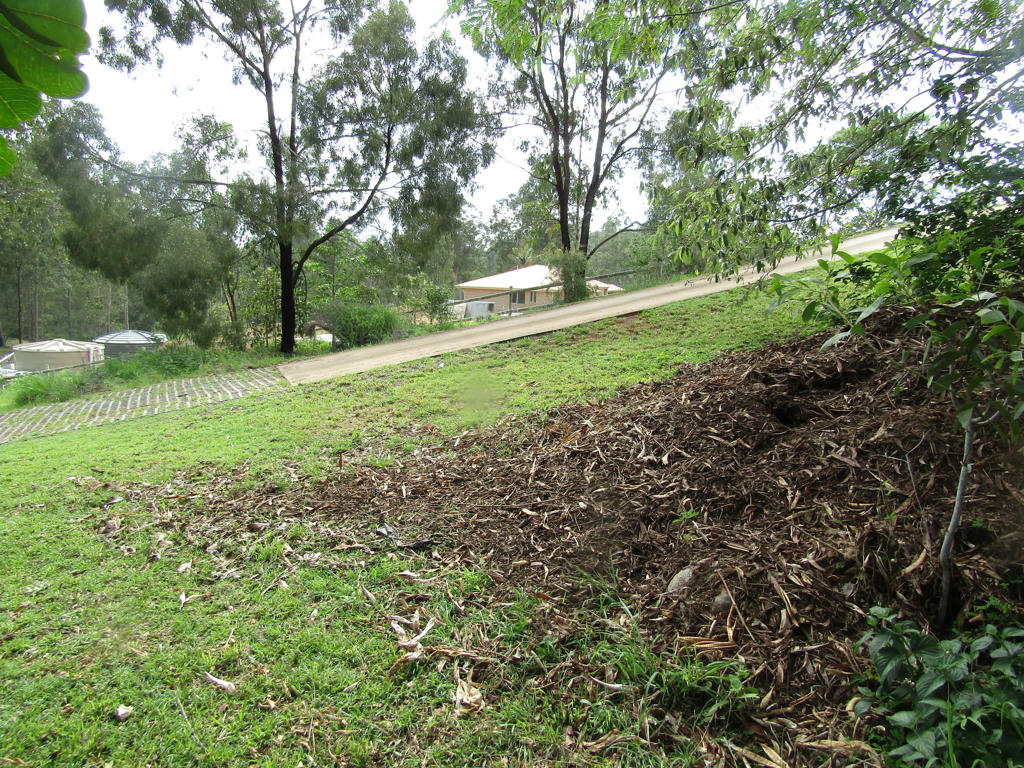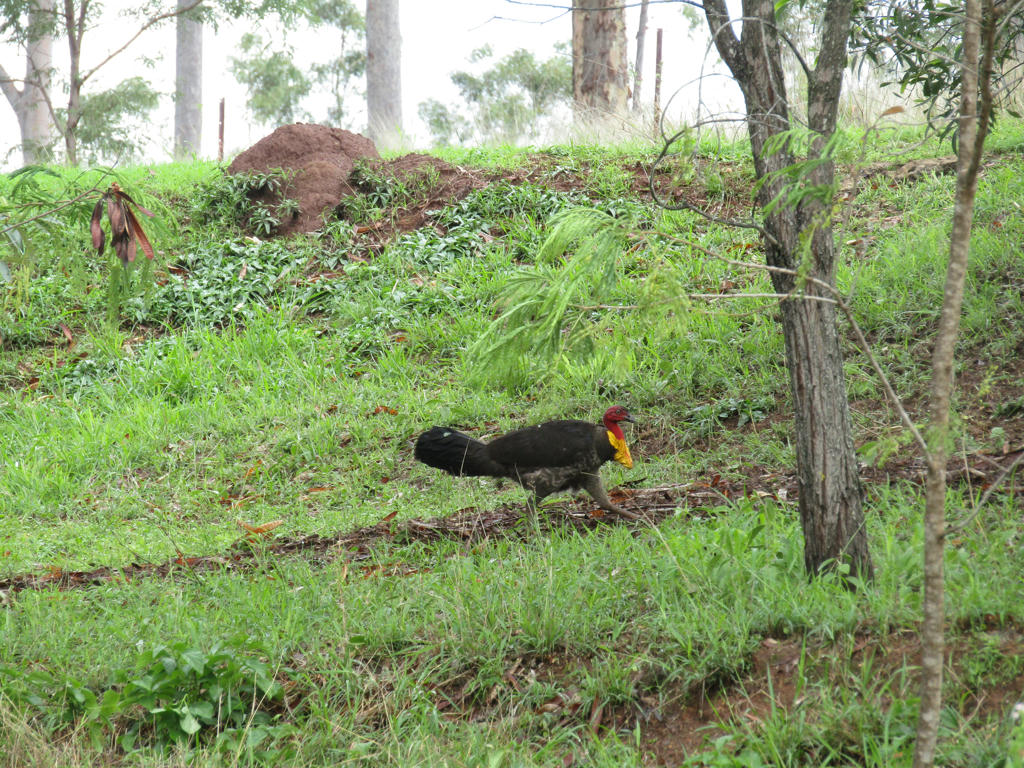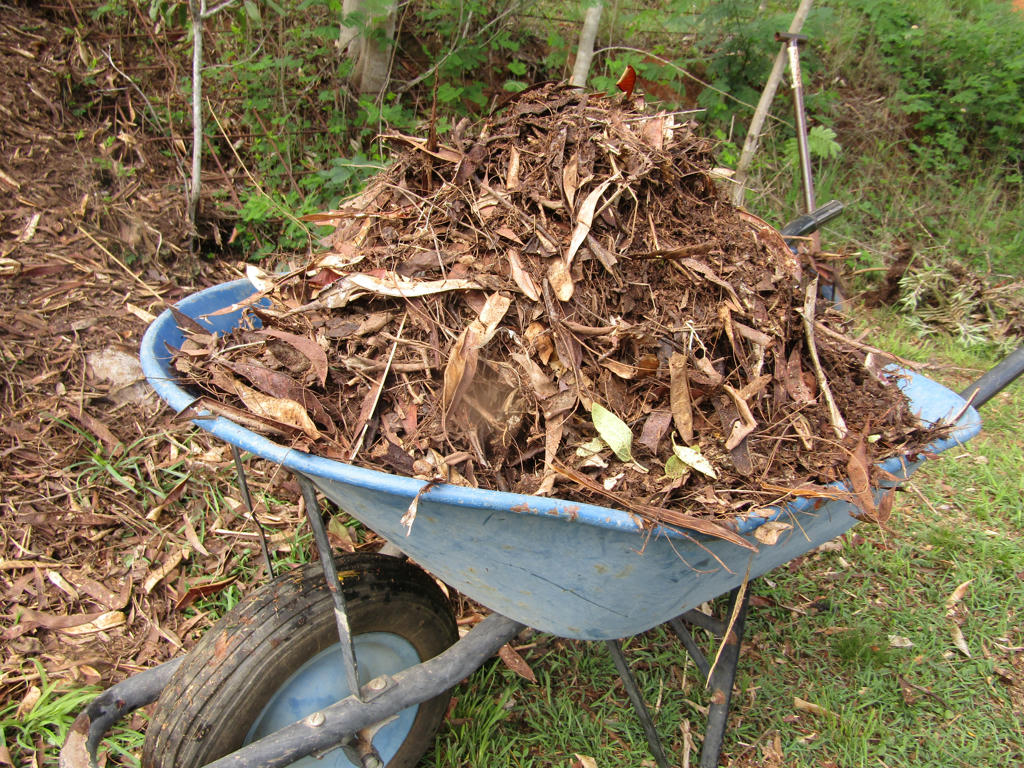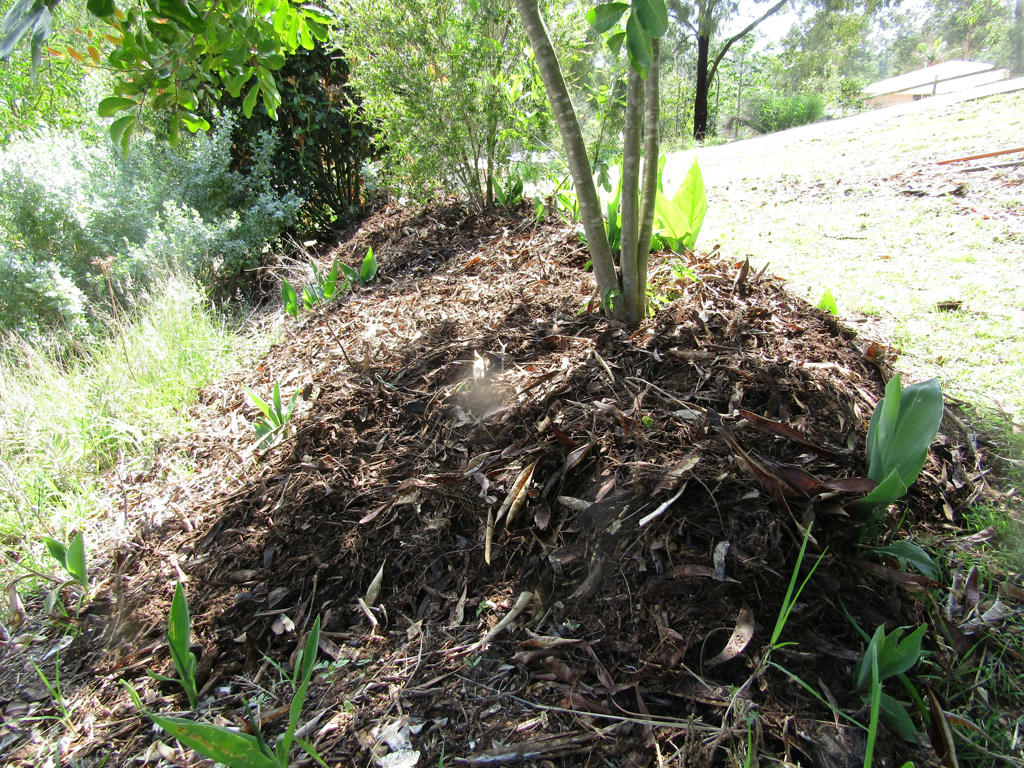While I've been away from this blog, I've been working on a building project. A very old project. It won't be news to those, reading this blog for some time. I'm talking, retaining walls again. Yes, my friends, we're still building them. Nine years, by my count.
May 2008
We started our
first drystone retaining wall, back in 2008. Which was more like a rock veneer. It wasn't designed to hold any weight, just stop the soil from rolling down the hill more easily - into the areas we wanted to use for compost bins. It was just a
tiny prelude, of what was to come!
Terrace block walls
Our very first "prefabricated" block wall, went up, early 2008. Oh boy, we filled in about 7 years worth of work, on prefab block walls! Which gave us a lot of FLAT utility space, on our many slopes. We purchased cheap land, but the cost came later, in constructing retaining walls.
We've found cheaper ways to build them however...
Log walls
Like using the enormous
trees on our property, as wooden retaining walls. Total termite fodder! As they're not treated, at all. But at least they keep the little sawdust munchers, less interested in the house. Being hardwood trees too, it takes many years to make a meal of.
Tyre walls
We've even used free tyres to build retaining walls. Anything to keep costs down, as we attempt to hold the earth from defying gravity. Because when you've been doing this for as long as we have, you have to find ways to trade "time" for "money". Meaning, you use more of you time to gather, free materials, than you use money to purchase them.
First, large, drystone retaining wall
Where we really came into our own though, was in discovering the ability to build drystone retaining walls. The mega variety. And the fact, our local council (or Main Roads, I'm not sure which) would dump dirt from road reconstructions, after the flood, just a few streets down from us. We'd grab a trailer full of dirt, and inevitably find a hoard of rocks. Home they came with us too!
We have not managed to reduce that pile, because roads keep getting built. More resources keep being added. We're barely making a dent.
Upper and lower walls -2013
We actually started fortifying this side of the house, with drystone retaining walls, after the 2011 Queensland floods. Work started on the lower wall, early 2012. Why did it take us a year to get building? Because it takes that long to acquire resources. We were working on the walls in our spare time, between raising kids, going to paid work (in my husband's case) and generally managing a property.
The last time we left off this particular drystone retaining wall,
was back in 2013. That was the year our son was due to be born, so it wasn't long before all work on this drystone retaining wall, came to a halt.
February 2013
This is where we left it, and four years have passed, since. Having babies and
building driveways, are important time commitments too. Honestly, I can't remember everything we did, in those four years, but I don't remember much resting. Opportunities were seized, but not for this particular drystone retaining wall. Not until recently...
Click to enlarge
The new section has been cobbled together, much like the rest - as resources became available. We like the big rocks for the base, but they're not so easy to come by. So we wait until we have enough to build the next section. And so it has been going, for these drystone retaining walls, since 2012.
It takes time, but it costs less.
Backfill opportunities
We're not particularly picky about which materials we put in our walls either. Backfill (behind the wall) is for hard trash, really. David found some old besser bricks, from someone's old project, at the local tip. They have been used and partially filled with concrete. The one above, also had a beer bottle embedded into the concrete. Someone's celebratory contribution, perhaps?
I topped it off with some blue-metal, available from the local landscape supplies. Blue metal, is what we purchase for these drystone retaining walls. Because no matter how hard you try, there will always be a small gap to fill. Which brings me to the next thing about building drystone retaining walls.
Size matters
There needs to be plenty of different sizes of rocks. Because when you're putting a wall together, with non-uniform pieces, there is inevitably a gap to fill, requiring different sizes.
We try to stack our incoming rocks in different piles based on size. There will always be those rocks which don't fit into the small, medium and large categories, but they end up in one pile, or another. Eventually, they're all used, until it's time to go searching for more material.
The base
The biggest rocks are reserved for the foundation. Make sure these are solid, and without imperfection, as they will be holding a lot of rocks on top. In Queensland, regulations state you're not allowed to build a wall, higher than a meter, without an engineer's certificate. We're sure to keep under a metre, but even low walls, can be heavy.
Chinks
Always have on hand, a lot of smaller rocks too. These are great for chinking into places, larger rocks won't fit. It's like putting a jigsaw puzzle together. Return to your stack of rocks, regularly, to find the pieces which look to fit the best. If that fails, you may have to use two smaller rocks to fill the one space.
The aim is to fill in all the spaces, so none of the rocks will move. The ingenuity behind drystone retaining walls, involves filtering any water through the entire rock face, without the soil! So small rocks for chinking, are just as important as large rocks are, for the foundation.
Blue metal, is that glue for us - filling in all those spaces we cannot find a rock for. So it's worth the investment in purchasing. We want these walls to last.
Depth
The thickness of the wall is important too. We aim for 40-50cms. The nice facing rocks go down first. Then ugly backfill, goes behind. We've been able to find a lot of petrified wood on our property for this purpose. We find petrified wood and sandstone, but quality can vary, in the latter.
With sandstone, we've found it's best to let it soak in water and see if it breaks apart. Lower grade sandstone will, and eventually disintegrate over the years. You don't want that in your wall. Especially in the foundation. Any sandstone we're not entirely sure about, goes in the upper section of wall - just under the capping stone. That way, it's easily replaced, if they do prove to be inferior.
Angle
An important design feature, of a strong wall, is tilting the rock face back, by approximately 10 degrees. This has to do with the
angle of repose. It's a bit technical, and each wall will have a different angle: depending on the location, the slope and material the wall has to hold back.
As a general rule, we keep to 10 degrees. So as we're stacking the rocks, up, we place them further back, than the rocks below. This helps to resist the weight of the material packed behind. It has worked wonderfully over the years.
Old section, observed recently
This is a section of the original wall, which is approximately four years old. It hasn't moved in that time. As for which rocks we choose, I read in a landscaping article, they should all be the same. Apparently it's meant to look more professional.
Unfortunately, we don't have the luxury of uniform rocks, so we use whatever we can get a-hold of. Blue stone, sandstone, river stone, petrified wood, and even, good old concrete!
Concrete capping stone
We've found a lot of concrete, pulled from the road, in various soil collection journeys. They have a flat (enough) top, which makes for a nice top layer. We've even used concrete from the pour of our house slab - builders always dump the excess somewhere; which has been good for back-fill too.
We use every possible rock-like piece of the puzzle, to build our drystone retaining walls. If it's going to be dumped into landfill anyway, it might as well be in our own.
Up close
I actually like the different tones of rocks we collect. It's like a patchwork quilt, using what we have available at the time. I can certainly see the appeal of a uniform rock wall, but I haven't found our cobbled together ones, altogether unattractive, either.
Besides, over the years, they tend to grow moss and fungi which blends them all together anyway.
This rock is not rolling
A large chunk of concrete we used in a wall, just down from our current project. (I'll demonstrate what I mean soon) has been in shade, for most of winter. Which has caused it to grow moss, all over it. Making it blend into the greenery, all the more perfectly.
I love seeing nature, take over our endeavours, by adding it's personal design touches. Shades of green, abound!
Lower rock wall
This is the lower wall, just down from our current project - and it came together last winter. It's actually where we first use to dump the rock, when building the original drystone retaining wall, back in 2012. Seeing that pile of rocks, become invaded by weeds, as the years passed by, kind of inspired us!
So we removed all the old rock (and the weeds) and built a very low wall. Really, it was designed, to hold back the soil for the plants to grow. You can see the Spanish Iris (grass like) which we broke up the wall with. There are other plants behind the Iris, but they're still very small.
I call this our green, rock wall. It's a fusion of rocks, with plants - working together to hold back the soil.
In perspective
This shows the lower green wall, in relation to the upper drystone retaining wall, we're presently working on. In between, we've created an access path. The wheelbarrow is taking up some room, but that's what it's meant for. Access!
When designing retaining walls, always plan for an appropriate access path. If you can have it before construction begins, it makes for a safer working area. There's nothing worse than hauling heavy rocks around, only to have your foot land in a dip in the ground. Ask me how I know this?
Access is essential
In the five years, since this project began, we've been working on a site, with MANY dips and ruts. When we constructed the lower green wall, last winter however, it showed us the line for a pathway. As we dug out the soil, for the foundation of the new wall, we finally filled-in all those dips and ruts, in the pathway. It's heaven now!
Seriously, I must have goats knees from the many years, navigating less than perfect terrain - on slopes. My brain, somehow knew many of those holes and avoided having mishaps in most of them. But if you don't have to do that, don't!
Every time we make another piece of flat land, we lament why we didn't do it sooner. But, gosh, we've been so busy doing other important stuff too. Collecting resources, doesn't happen on it's own! So everything has to wait it's turn. But consider those access paths, as the MEANS to doing things. I'm glad we decided to perfect that pathway, the second time around. It's made such a difference to working on our project again!
Down tools - but not for long
So this is where we are at, presently. We dig down, about 10-20cms, for our foundation rocks, and build up a section of wall, as we find the resources. That's how it's been for 5 years, and that's how it will be, for however many years to come. Time. Painstaking to wait, perhaps. But has saved us anywhere between five to ten thousand dollars, purchasing materials to date.
We've acquired materials from dump sites, our own yard, they've even washed downstream, in our gully - and even collected rocks from my mother's house. She brought a few in her boot, a couple of times a year, when she came to visit. They weren't desired in her yard, but went to a good cause in ours. Oh so gradually, we found the resources, and built a wall.
Getting there
When I think about what we've achieved on our landscape, it was really TIME that needed to be invested. We found precious little "spare" time, but what we had, managed to be cobbled together (like our wall) and accumulated gradually, to be something more substantial.
When I think of how we felt overwhelmed, or the toddlers who didn't cooperate with our building plans - the times I worked alone on the wall while my husband worked off site. When I think of the exhaustion, and the near misses too, well there's quite a lot of imperfect living, packed into those walls.
My husband has a saying, and I guess it's entirely true. We are packed into those walls, and they signify who we are. Superheroes, we are not. The physical reality of a busy life, constantly feeling like there's not enough time in the day. Goodness, but doesn't it amount to something more substantial, when work accumulates over time?
You can be weak, AND strong, so long as you have a degree of health and mental dexterity, to keep forging through those little pockets of time.
Is there a long-standing project, weaving through your life? I'd love to hear about it.









